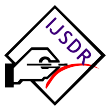Imp Links for Author
Imp Links for Reviewer
Research Area
Subscribe IJSDR
Visitor Counter
Copyright Infringement Claims
Indexing Partner
|
Published Paper Details
|
|
| Paper Title: | EXPERIMENTAL STUDY OF PERVIOUS CONCRETE |
| Authors Name: | A.Ayyappan , A.Dinesh kumar , G.Sangeetha , S.Roshini , M.Sivasangari |
| Unique Id: | IJSDR1803030 |
| Published In: | Volume 3 Issue 3, March-2018 |
| Abstract: | Pervious concrete is a special type of concrete with a high porosity used for concrete flatwork applications that allows water from precipitation and other sources to pass directly through, thereby reducing the runoff from a site and allowing groundwater recharge. It is also called as porous concrete, permeable concrete, no fines concrete and porous pavement. Pervious concrete is made using large aggregates with little to no fine aggregates. The concrete paste then coats the aggregates and allows water to pass through the concrete slab. This type of concrete having a high void content of about 30%, is becoming popular nowadays due to its potential to reduce the runoff to the drainage systems which can provide a water flow rate around 0.34 cm/second. It is an important application for sustainable construction and is one of many low impact development techniques used by builders to protect water quality . Pervious concrete also find its effective application in low loading intensity parking pavements, footpaths, walkways and highways. The pervious concrete is considered as an Environmental Protection Agency (EPA) for providing pollution control, storm management and suitable development. It is a composite material produced by mixing cement, inert matrix of sand and gravel or crushed stone. This concrete has a light colour and open-cell structure because of which they do not absorb heat from the sun; they also do not radiate the heat back into the atmosphere, which reduces heating in the environment. Pervious concrete has low installation costs. In addition, it filters the storm water thus reducing the number of pollutants entering the rivers and ponds. Pervious concrete also improves the growth of trees. In the present study the behaviour of pervious concrete has been studied experimentally. The water-cement ratio was kept at different ratios 0.35, 0.40, 0.45. Different properties of pervious concrete e.g. workability, compressive strength, split tensile strength, flexural strength test at 7, 14 & 28 days have been studied experimentally. The mix proportions with aggregates size (4.75 mm to 10 mm) gives higher strength when compared to mixes with aggregates size (10 mm to 20 mm) and (4.75 mm to 20 mm) respectively |
| Keywords: | pervious concrete, Mix proportion, Permeability, porosity. |
| Cite Article: | "EXPERIMENTAL STUDY OF PERVIOUS CONCRETE", International Journal of Science & Engineering Development Research (www.ijsdr.org), ISSN:2455-2631, Vol.3, Issue 3, page no.138 - 147, March-2018, Available :http://www.ijsdr.org/papers/IJSDR1803030.pdf |
| Downloads: | 000337068 |
| Publication Details: | Published Paper ID: IJSDR1803030 Registration ID:180096 Published In: Volume 3 Issue 3, March-2018 DOI (Digital Object Identifier): Page No: 138 - 147 Publisher: IJSDR | www.ijsdr.org ISSN Number: 2455-2631 |
|
Click Here to Download This Article |
|
| Article Preview | |
|
|
|
Major Indexing from www.ijsdr.org
| Google Scholar | ResearcherID Thomson Reuters | Mendeley : reference manager | Academia.edu |
| arXiv.org : cornell university library | Research Gate | CiteSeerX | DOAJ : Directory of Open Access Journals |
| DRJI | Index Copernicus International | Scribd | DocStoc |
Track Paper
Important Links
Conference Proposal
ISSN
 |
 |
DOI (A digital object identifier)
  Providing A digital object identifier by DOI How to GET DOI and Hard Copy Related |
Open Access License Policy
Social Media
Indexing Partner |
|||
| Copyright © 2024 - All Rights Reserved - IJSDR | |||






Facebook Twitter Instagram LinkedIn